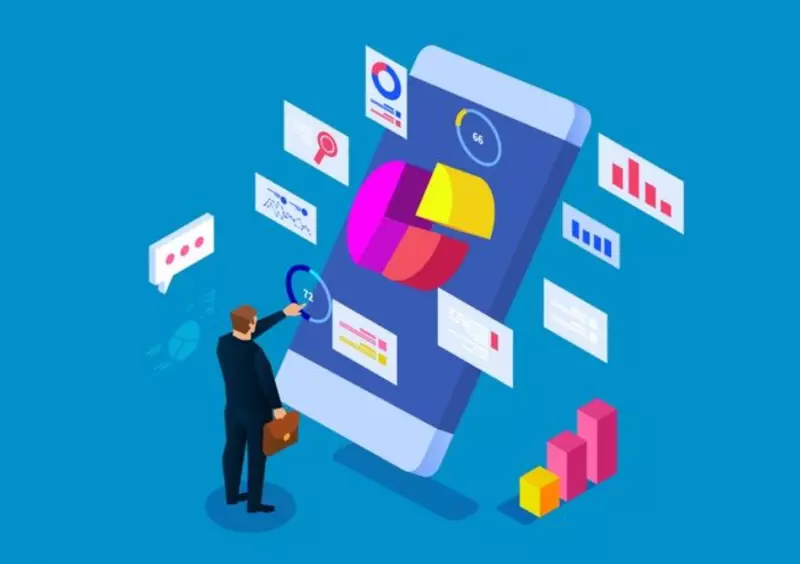Banner ads are everywhere, yet it’s so easy to design them poorly. Why waste ad dollars when you can use these 9 tips to making meaningful banner ads that engage your audience and generate revenue? Check them out!
Banner ads are a very common form of advertising that have evolved from static ads in print to static ads online finally ending at motion-equipped tools for getting attention. Since the potential customer’s attention span is the finite resource ads are targeting, banner ads are often noted as annoying, easily ignored ads that end up defeating the purpose of the ad in the first place: intriguing customers! However, this method of advertising still exists for one simple reason: they work when done well. Here are 9 tips to help take your ads to the next level.
9 Tips for Great Banner Ads
1. Creativity is key.
Designing an effective ad goes beyond the basics of adding your logo and a compelling call-to-action (CTA). While those are the core elements of any successful ad, showcasing original elements of your brand that are relatable to audiences is what makes an ad memorable. Thoughtful, insightful design and high-caliber design will entice viewers while serving as an elegant introductory impression.
However, with enough excitable information or styling, going against the grain to grab attention may work better for some brands that are already high energy. The context of your brand’s image and story can help inform the tactics for your ad. Sometimes less is more, and others, more is actually more! One unifying element, regardless of approach, is to remember that it is possible to grab attention for the wrong reasons, so be mindful of your impression and make it wisely while still having fun!

2. Make sure your ads matter to your audience.
Plenty of tools and programs can give you valuable insights for understanding your ideal customer. Creating ads with that information at the forefront will show viewers you understand their plight and can reliably meet their needs with your product or service. Consider this, 76% of marketers fail to use behavioral data when creating ads! It may seem obvious to create content that means something to your audience, but per the statistics, many brands fail to leverage the information already available to make the best ad. Given this lack of personalization, it’s no wonder so many banner ads fail. Getting the views of the ad is only half the battle. If your content isn’t worth stopping mid scroll to customers, your banner ad will simply add to the list of thousands of useless ads a given user sees in a day.
3. Think about what your ad looks like from the viewer’s perspective.
Sizing and placement of your ad can end up telling as much of a story as the content of the ad itself. While the internet’s layout can feel endless when compared to an old-school newspaper, elements of that design and layout have definitely carried over to the digital world. When designing, it’s important to consider message effectiveness relative to size and location of the ad. As someone is scrolling through other content, your display ad is a distraction. Is it a palate cleanser or an exciting diversion? The choice is yours as you consider what the viewer sees while creating the ad.
4. Follow Best Practices and Policies.
This may seem like a no-brainer, ads are an opportunity to make an impression and collect data from audiences. To avoid having ads taken down unexpectedly, make sure your ads aren’t misleading or misusing the information collected. Using language that’s inappropriate or dishonest violates general policies of Google and other ad giants and results in ad removal.
While wild or outlandish statements or promises can certainly garner attention, not all attention is good if you don’t deliver on the promises or say things that don’t make sense. Customers are inundated with options, and you have limited space to build trust and connection with the viewer. Don’t waste it with bombastic lies or thoughtless materials.
5. Realize where the potential customer is on the buyer’s journey.
When crafting ads for consumers, expecting immediate return is illogical. Ads can also serve as reminders to make purchases, so when looking for attention, berating your customer to BUY NOW may not be the most effective messaging in every context. Make sure your message varies to meet customers at various points in their ultimate decision to buy from your brand.
Consider integrating interactive elements to encourage clicks or think of your ad campaign as pieces of the same story that keep users on the lookout for your ads. Use data collected from previous customers to continually craft an ad experience that relates to both the complete new viewer and one that may already be vaguely familiar with your brand.

6. Keep customer context in mind.
Remember that your ad is finding your potential customer in the middle of viewing something else. Your design helps the customer decide if your ad is a welcome distraction, like a text from a friend or loved one, or an annoyance, like a pop-up ad in the middle of a favorite song. If your ad incorporates the element of distraction into design, keeping the context in mind will increase effectiveness. For example, if your future client is scrolling through a webpage, animating your ad to scroll with them or change with movement past it, you’ll likely intrigue them more than them scrolling past a static image or idea.
7. Continually evaluate your banners.
Think of ad campaigns as a continuous learning experience. Your experience with customers will change as you get to know them better, so your ads should change along with your data! Maintaining a sense of novel fresh angles means allowing your strategy to adapt in face of live-time responses. Measure results and be willing to change to maximize results.
Strategizing doesn’t just mean design and creative elements. Sometimes technical elements can be just as critical as original content. Communicate with your team when creating content to make sure your brand’s voice is present while also making sure the messaging is clear. Make sure you’re already familiar with the guidelines of your target posting area before going into design to make sure you start with a solid foundation.
8. Specificity will help you stay relevant.
General messages prompt general results. Without giving viewers a specific reason to click on your ad, it becomes yet another image to ignore in the viewer’s search for personally relevant content. With so many personalized experiences online, users have come to expect a level of connection and personalization, and your ads should be no exception. While banner ads have a bad wrap for being intrusive, if your content is relevant and connected to things that interest your target audience, the interruption will actually lead them down a path they needed to take anyway to solve their nagging issue.

9. Don’t forget to think about desktop vs. mobile experiences.
More people than ever are accessing content via mobile devices, and that number only seems to be increasing over time. When thinking about ads, make sure this growing marketshare is properly attended to and maximized to its highest potential. While mobile devices are increasingly sophisticated, not every design translates the same way. Don’t assume that simple designs will automatically translate from desktop to mobile. In the same way that your mobile-friendly site is a modified version of your desktop site, your ads must follow suit. (And if you don’t have a site optimized for mobile, be sure to get in touch with us to fix that!)
BONUS! 10. Get help from experts!
While going it alone is certainly possible, the best way to make sure your ad campaign is on point is to enlist the help of experts. USA Link System offers a. variety of plans and price points to help make sure your advertising goals are met with efficient creativity that will inspire onlookers to check out your brand. Contact us today to schedule a free consultation to discuss the right strategy for your brand!













Leave a Comment
Comments (0)